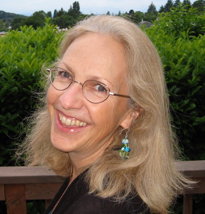
|
Folk Dance Federation of California, South, Inc.
|

|
CLICK AN IMAGE TO ENLARGE
You don't need to leave home to travel when you're a folk dancer. We take 3½ minute journeys all over the world. What are these dances? Here's one perspective from my life experience. Let me take you back to 1980.
In 1980, I still wore tights and leotards. I was recently married, embarking on a dance career, and newly relocated to the bustling metropolis of Wenatchee. Yep, husband's job. I was not clued in to folk dance yet. I was a real dancer. I did modern dance. Soon, however, I realized that due to economic realities (if I wanted to teach more than three people) I must also become an aerobic dancer.
But hey! That meant choreographing dances to my favorite songs! It meant when a great song came on the radio while I was doing dishes I had a legitimate reason to gallop around the house! Stevie Wonder, Cyndy Lauper, Men at Work...
But crafting these dances was tricky. They had to be easy enough for people attending their first class, yet clever enough to engage those who had been there for months. Is this starting to sound familiar? The best dances endured. The clunkers faded away. (If only I could get them off the mix tape.)
But what kind of dance was it? If a researcher from Bulgaria, for instance, walked up to me after class with a clip board and asked, "What steps are you doing?" what would I answer? I'd look bewildered and say, "I'm not doing steps. I'm just dancing." Which is what people all over the world say when you ask that question. Our own culture is invisible to us.
Now, looking back, I see a whole world of dance, a great sweeping history of European patterns and African propulsion twined into swing, and then unwound in an era of do-your-own-thing. I see the dance history of my people, packed into a very small suitcase. The 3½-minute song.
That's the average length of a pop song. It's also the average length of our international folk dance songs. Why? Because of the original format of the 78 rpm record: 3 to 5 minutes per side. It was the technology of recorded music that launched the particular phenomenon of international folk dance–the same group of people doing many kinds of dance.
I suggest that, in most cases, the folk dances we do bear the same relationship to the region of origin as my aerobic dances. No more, and no less.
For example, I've had the pleasure of working with the Zimbabwean musician and dancer Lora Chiorah-Dye. She told me the dance Botendere, which has become part of the folk dance educators' repertoire, was really a tiny segment of a dance and song they would do in her village. At night–incidentally, after the dishes were done–she would run outside to join the gathering. They would sing, dance, and play rhythms, all at once. The same "song" would go on and on. There was no way she could teach an American child all that. So in the case of Botendere, she extracted a piece of the melody, a couple of steps, and one clapping pattern. An arrangement, packed in a suitcase for travel.
There are exceptions, of course. Some of the dances Martin Koenig taught at the NFDI festival on March 19th came straight from the village. But he also mentioned during his film presentation the problem he encountered in Bulgaria of the dancers not knowing when to stop. As long as he kept filming, the musicians kept playing and the dancers kept dancing.
Us? We would have slowed down at about 3½ minutes.
Copyright @ 2016 Susan Wickett-Ford.
Reprinted with permission from The Northwest Folkdancer magazine, volume 61, issue 6, June 2016.